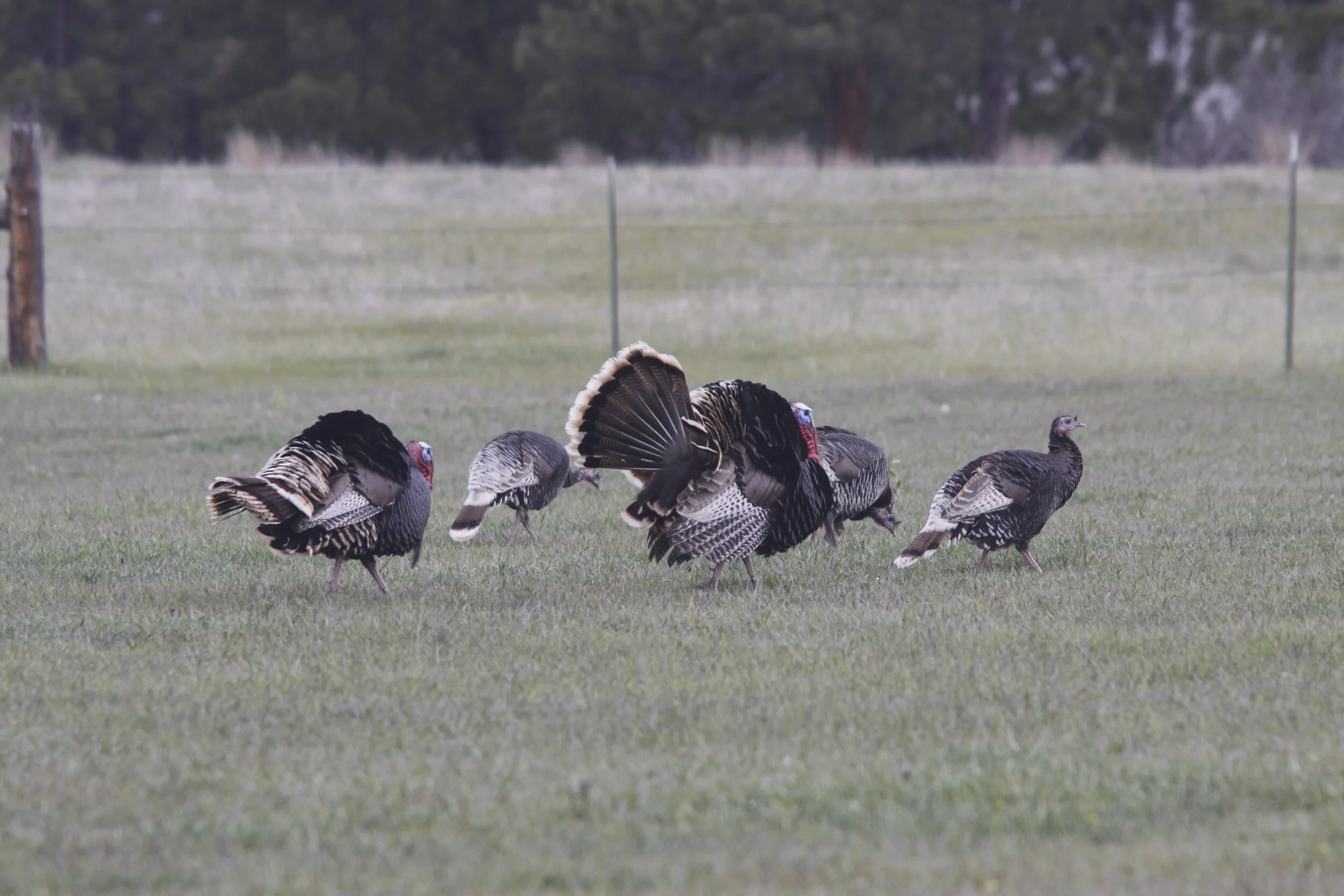My Love Affair With Merriam’s (turkeys, not women)
Sharon Kayser turkey hunting success after luring in a mad boss henAfter hunting all of America’s turkey species (except for the Osceola holding up near Disney World,) I’ve declared my love for the Merriam’s. They are simply the best species to hunt.
Do not argue with me. I have more than three decades of hunting and guiding experience under my belt. Most hunts ended with a beautiful gobbler taking a ride in my truck. Most have been Merriams.
Merriam’s country is my preferred hunting grounds. It’s not the famous, turkey-rich southeast where some states let you shoot two gobblers each spring, some two a day. No, it’s the High Plains states like Montana, Wyoming, South Dakota and Nebraska where you can glass and stalk, run-and-gun, crisscross state lines and use multiple tags. Often on public lands. Licenses are typically easy to get in Merriam’s country, too.
The Black Hills region has ideal habitat for turkeysFilling the freezer is a big part of my Merriam’s love, but more compelling for me are their abundance and accessibility. And their willingness to interact, to call, to roam the wide open, come to calls and decoys… And all in some of the most beautiful western landscapes this side of the Continental Divide.
MERRIAM’S COUNTRY/MERRIAM’S CHARACTER
Merriam's like to hear themselves gobble so try a variety of calls to get them talkingMerriam’s reside in at least 16 Western and Great Plains states, plus several Canadian provinces. Merriam’s make their home from Arizona to Montana and west to the mountains of the Pacific. They populate the ribbons of timber across the Great Plains, only succumbing to Rio pressure once they cross into Kansas.
Top states for a Merriam’s hunt include Colorado, Idaho, Montana, New Mexico, South Dakota and Wyoming. That is not to say there is not good hunting in the rest of the states with Merriam’s populations. Nebraska has superb hunting and friends of mine in Washington report excellent hunting as well. Out-of-the-way Western pockets can provide exciting hunting opportunities anywhere.
Several characteristics define Merriam’s habitat. First and foremost, they reside in semi-arid regions receiving less than 25 inches annually. Some of the areas I have hunted have an annual rainfall of less than 18 inches. In regions where water is a hot commodity, reservoirs, potholes, creeks and rivers can attract and hold huntable Merriam’s populations.
Elevation does not seem to have a strong effect on where Merriam’s call home. In Montana, Wyoming and South Dakota, I have hunted them at elevations of more than 6,000 feet. In other locations on the Great Plains, they thrive at 1,000 feet. Steep, pine-covered mountains can hold Merriam’s. So can narrow creek valleys decorated with just a smattering of cottonwoods. Ditto foothills, even steep mountain slopes. Do not overlook any location in your search for Merriam’s. Open your HuntStand hunting app and explore the acres of public-land opportunity in the West.
Merriam's toms displaying in the springMerriam’s are like small, feathered bears. They will eat almost anything. In the early spring, before the green-up, they target grain, pine mast, dried grass and anything else edible they can scratch up. When snow covers the landscape, they often depend on ranchers and farmers for handouts that spill during livestock feeding. In the mountains they scratch for food along south-facing slopes that are free of snow.
When spring arrives, Merriam’s have an unlimited buffet spread before them. Lowland Merriam’s hammer alfalfa fields and hay pastures along river bottoms. As soon as grasses and wildflowers sprout at any elevation, Merriam’s are right there nabbing them. No matter their location, Merriam’s always relish insects of many varieties.
Despite their omnivore appetite, Merriam’s earn the ire of ranchers beset by too many of these huge birds stealing livestock feed. A few big birds nibbling spilled grain at your cattle’s feet is no big deal, but it is not uncommon for many ranchers to winter 200 or more turkeys. And I know a few who put up with more than 500 birds! All winter. Stop by and ask permission while 300 turkeys are attacking a haystack and you might get the hunting green light.
Merriam’s have another great trait. They like to hear themselves gobble. It is not uncommon to hear a gobbler sound off more than 100 times at daybreak. And unlike their cousins, Merriam’s respond to your calls and decoys. If there is one mistake I find among novice hunters calling Merriam’s is that they give up too easily. Try loud, try subtle, or set the volume to medium, but one of those should trigger a showing.
If you don’t live in Merriam’s country, I can understand why you might prefer your Easterns, Rios or even those little Florida Osceloas. But you might want to try a Merriam’s hunt someday. It’s a grand western turkey adventure. The action is often fast and furious, the landscapes are second to none, and this big western turkey is just The Best!
Merriam's turkey successBUY NOW FOR TURKEY SEASON!
Author’s Contact Information:
Mark Kayser Hunting Lifestyle www.markkayser.com
Rocky Mountain Hunting Calls Turkey Calls www.buglingbull.com
CVA Scout or Hunter Shotguns www.cva.com
HuntStand Hunting App and Map Printing www.huntstand.com
ALPS OutdoorZ NWTF Grand Slam Turkey Vest and Hunting Blinds www.alpsbrands.com/alpsoutdoorz
Montana Decoy Co. Miss Purrfect XD Turkey Hen Decoy www.montanadecoy.com
Cabela’s Turkey Hunting Headquarters www.cabelas.com













